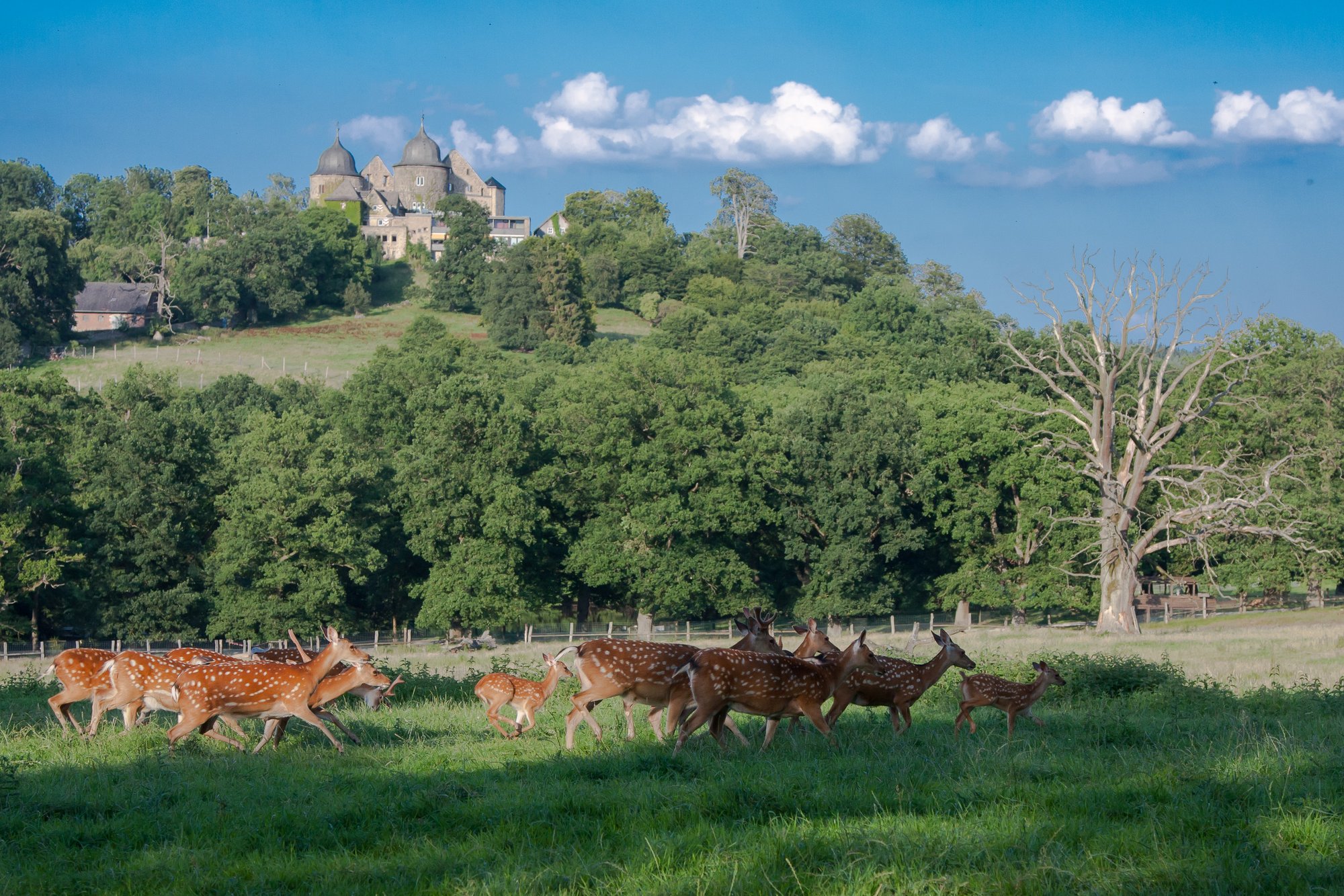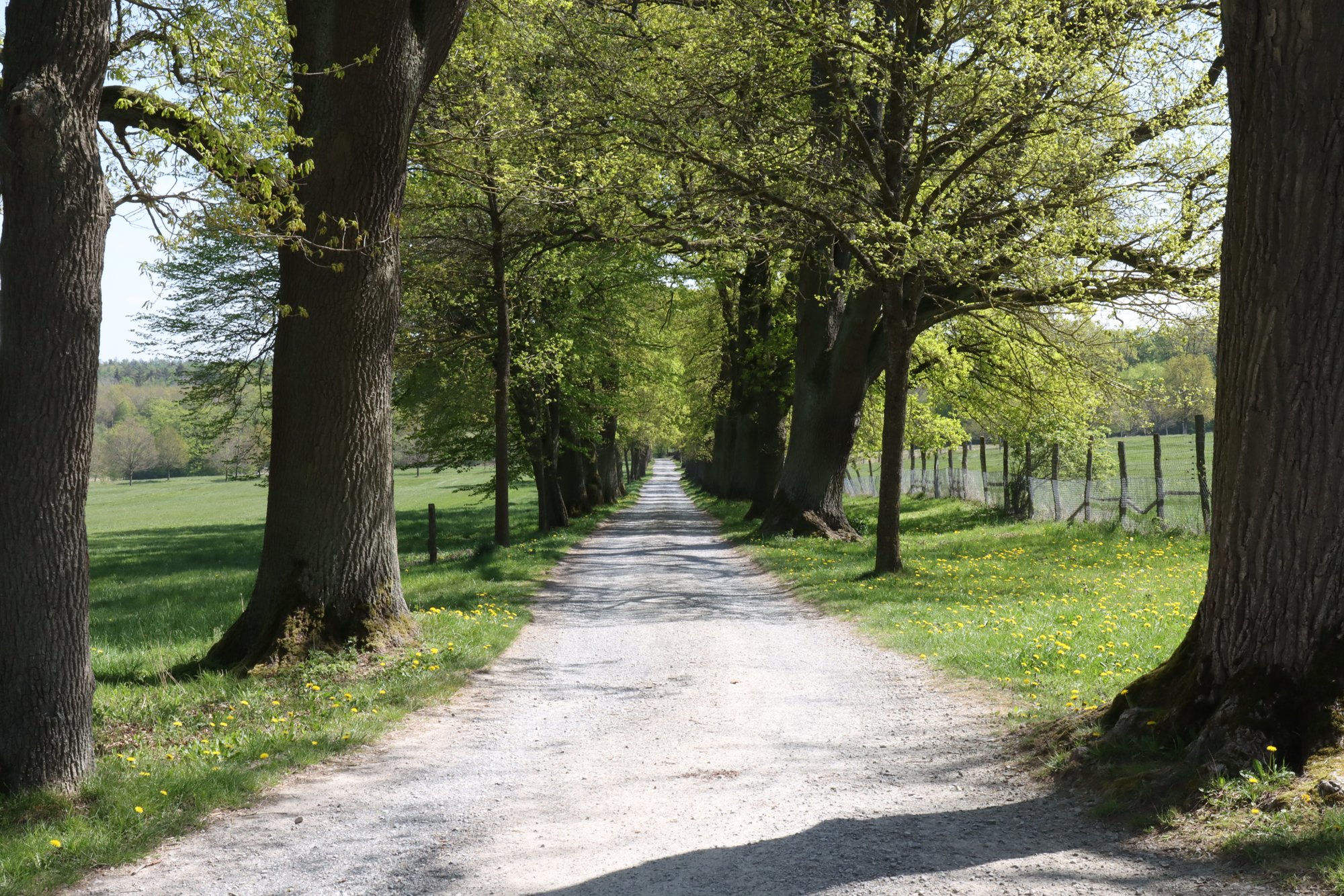Welcome to the Tierpark Sababurg!
The district of Kassel is pleased to welcome you to the Sababurg Animal Park. You have chosen to visit one of the oldest zoological institutions in Europe, which today, with over 300,000 visitors, is one of the most popular leisure facilities in North Hesse. With its 440-year history, historic walls, extensive pastures, romantic avenues, and well over 1,000 oak trees, Sababurg Animal Park is now a unique ensemble with cultural and historical significance. The Sababurg Animal Park and the Dornröschenschloss Sababurg (Sleeping Beauty Castle Sababurg) have been declared a cultural monument by the Hessian State Office for the Preservation of Monuments, which is to be preserved.
We therefore continue ancient traditions while simultaneously writing the story forward. Today, the animal park serves the purpose of preserving rare or endangered wild and domestic animal species. We successfully house bison, otters, wild horses, wolves, and lynxes, among many other species that you can observe up close. For families, the children's zoo with its exotic animals and numerous petting enclosures is a special experience.
Enjoy your encounters with our animals, as well as magnificent views of ancient oaks and Dornröschenschloss Sababurg. Discover idyllic spots and experience rare moments of special animal observation. Barbecue and picnic areas invite you to linger. We wish you an eventful day, close encounters with our local wildlife and domestic animals, and above all, lots of fun and relaxing hours in our animal park.
Our Mission and Values
Who We Are:
Sababurg Animal Park, part of the administrative unit of the district of Kassel, holds cultural and historical significance with its historic heritage. This uniqueness is to be conveyed, preserved, and continued.
The animal park is a financially managed, public educational and recreational facility, located in the middle of the Reinhardswald forest, accessible to a broad audience. With our work and services, we address visitors of all ages, income levels, and educational backgrounds from the heart of Germany.
What We Want and Do:
Environmental and nature conservation are important aspects of our work. The animals are kept as close to their natural habitats as possible in spacious and natural enclosures.
Wherever possible, visitors should be able to experience the animals up close in contact areas or without disruptive fences, and the animals should have generous retreat options. The well-being of our animals and keeping them as close to their natural state as possible is always our top priority.
We participate in conservation breeding programs and directly or indirectly contribute through our educational and outreach efforts to the preservation or creation of natural habitats for animals. Our goal is for our animals to become "ambassadors of goodwill" for their wild counterparts and their habitats.
Our educational tasks involve inspiring others to support species and nature conservation and to protect habitats. We shape our feeding demonstrations, experiences, and guided tours, as well as our outreach and signage, according to these goals.
As a public institution, we have a role to model. Our operations must be resource-efficient, environmentally friendly, and sustainable. In the animal park, all facilities and structures are planned and realized in a way that harmoniously integrates into the natural and historically evolved environment, preserving and continuing the historical heritage into the future.
How We Ensure We Achieve Our Goals:
We continuously educate ourselves both internally and externally. Animal care and management are based on the latest knowledge. Educational and experiential offerings are adapted in terms of content and methodology to current environmental education and nature experience standards, such as those of forest education or environmental education. Conservation and nature topics related to the animals we hold are the primary focus.
For our work and individual projects, we actively seek support and funding from associations and organizations. We also support and promote selected organizations and projects in the field of nature and species conservation. For example, we participate in conservation breeding programs (e.g., EEP = European Endangered Species Program of the European Association of Zoos and Aquaria) and collaborate with organizations such as NABU, German Wolf Association, and the Schutzgemeinschaft Deutscher Wald. We also support research and education through our collaborations. We work with universities such as Göttingen and Kassel in seminars, bachelor's and doctoral theses, among other activities.
Our employees are motivated and work as a team to make human-animal interactions, as well as related experiences and educational offerings, attractive for visitors. We evaluate feedback from our visitors and draw conclusions from it to continuously improve our work and offerings.
We continue to develop while considering ecological, economic, and social aspects to maintain and increase our attractiveness to visitors. It is of great importance to the district of Kassel to enable and make attractive animal-human encounters and related experiences for as many people as possible, as most people in our nature-disconnected everyday lives have little or no contact with animals or natural experiences.


